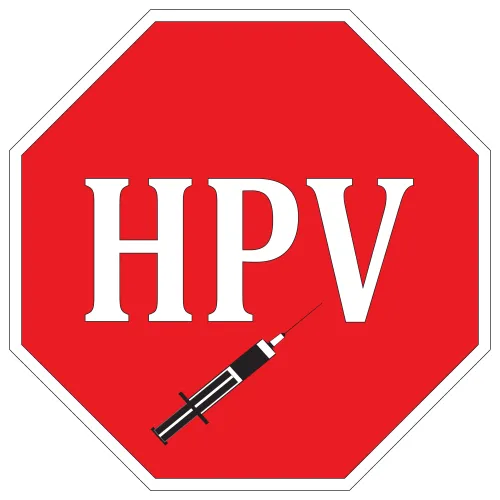Tackle These HPV Administration Myths To Avoid Losing Reimbursement

Find out what you should report when the patient decides against immunization.
You might get faced up with many a tricky situation when trying to get coverage for human papilloma virus (HPV) vaccine administration, especially when the patient refuses the vaccine after extensive counseling. Another such situation is to understand whether or not the service will be covered for male patients.
Read on for three HPV vaccine myths and how good documentation can help your coding cause.
Myth 1: You Won’t Get Paid for Extra Counseling
Being paid for extensive counseling in conjunction with the HPV vaccine might be difficult, but isn’t impossible.
Background: CPT® limits physician counseling as part of vaccine administration to individuals through 18 years of age (90460-90461). When the person passes age 18, you shift to vaccine administration codes 90471-90474, and this code set doesn’t contain a counseling component.
HPV vaccine administration can begin with children at age 9, and administration with physician counseling can be reported for patients up to and including 18 years of age with 90460 (Immunization administration through 18 years of age via any route of administration, with counseling by physician or other qualified health care professional; first or only component of each vaccine or toxoid administered).
However, once the patient reaches 19, you turn to codes such as 90471 (Immunization administration [includes percutaneous, intradermal, subcutaneous, or intramuscular injections]; 1 vaccine [single or combination vaccine/toxoid]), with or without physician counseling. You’ll also submit 90649 (Human Papilloma virus [HPV] vaccine, types6, 11, 16, 18 [quadrivalent], 3 dose schedule, for intramuscular use) for the vaccine itself.
Challenge: Physicians potentially can spend a significant amount of time explaining the vaccine’s purpose and answering questions from the parents or patient. That time isn’t factored into 90471 or related codes, so providers want appropriate reimbursement when justified.
Option: HPV includes counseling on reducing sexual behavior risks. When the physician spends at least 8 minutes counseling the patient, you could report 99401 (Preventive medicine counseling and/or risk factor reduction intervention[s] provided to an individual [separate procedure]; approximately 15 minutes).
“Although the descriptor says ‘approximately 15 minutes,’ there is not specific language in the guidelines, code descriptors, or parenthetical statements for selecting increments of time for codes 99401-99404, other than to provide approximate time intervals in their descriptors. Thus, when reporting these codes, the time guidelines in the introduction of the CPT® codebook apply, and those guidelines state that a unit of time is attained when the mid-point is passed,” notes an expert. “Since the midpoint of 15 is 7.5, code 99401 can be reported when anything past that (e.g. 8 minutes) is reached.”
You could look at other options from the CPT® code range for preventive medicine counseling, 99401-99404, if more time was spent for the counseling. Include a diagnosis such as V65.45 (Counseling on other sexually transmitted diseases).
Correct Coding Initiative (CCI) edits bundle 99401 and other preventive medicine counseling codes with the vaccine administration codes with the modifier indicator ‘1,’ which means you have to use an appropriate modifier to overcome the edits. Since the preventive medicine counseling codes are the column 2 codes in the edits with vaccine administration codes, you will have to append the modifier to these codes. The modifier that you will have to append to 99401-99404 is 25 (Significant, separately identifiable evaluation and management service by the same physician or other qualified health care professional on the same day of the procedure or other service).
Modifier tip: If you submit an E/M code and your staff administered the vaccines during a well visit, append modifier 25 to the E/M code.
Myth 2: You Can’t Report Anything for Refusal
The physician spends 10 or 15 minutes talking with a patient and her parents about the HPV vaccine. They decide against having the immunization, but that doesn’t mean you can’t code and bill for the provider’s time and effort.
Solution: If the counseling is separate from other services, you can report the most appropriate E/M code, such as 99401. Include V65.45 and either V64.05 (Vaccination not carried out because of caregiver refusal) or V64.06 (Vaccination not carried out because of patient refusal) on the claim with supporting documentation. If the vaccine was refused for religious reasons, you would report V64.07 (Vaccination not carried out for religious reasons) rather than V64.05 or V64.06.
Myth 3: HPV Pay Only Applies to Females
Insurance carriers sometimes deny claims for administering the HPV vaccine to male patients. You can still be paid, however, whether by the insurance company or the patient’s family.
Many insurers will now cover the use of HPV vaccines for males for the same ages as female patients (ages 9 to 26). It is best to look at the patient’s insurance to see if the service is covered and the guidelines for coverage, so you will not face the risk of denials when this service is provided to a male patient.
Plan ahead: Discuss the situation with the patient and his parents prior to vaccine administration and explain that their insurance might not pay. Ask the parents to sign an Advance Beneficiary Notification (ABN) accepting responsibility in case of insurance refusal.

